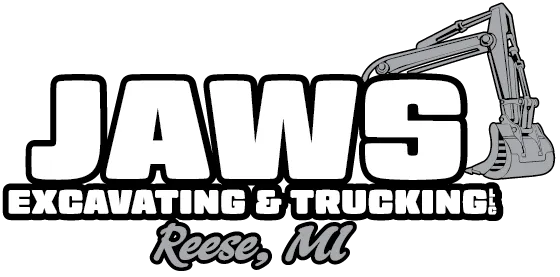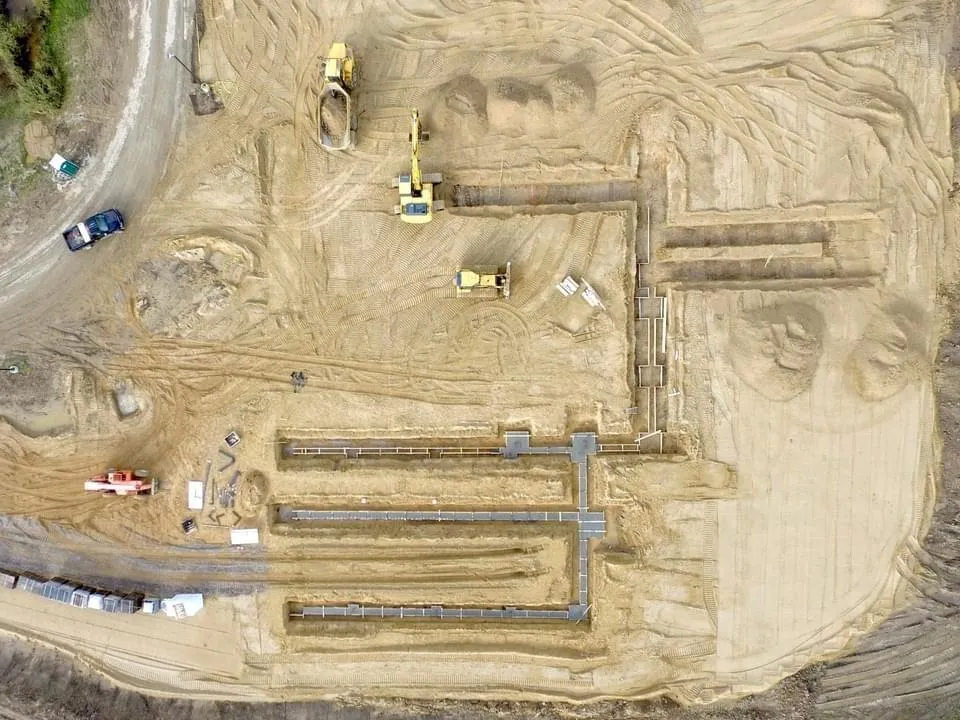
Driveway Grading Service Michigan
Driveway Grading Services; JAWS Excavating & Trucking, LLC
The Importance of Driveway Grading
Driveway grading is not just about improving the appearance of your driveway; it’s essential for its longevity and functionality. Proper driveway grading ensures that water drains away from your property, reducing wear and tear and protecting your investment. A well-graded driveway can prevent numerous issues, leading to fewer repairs and a smoother ride into your garage or parking area.
Common Problems Due to Poor Driveway Grading
Inadequate driveway grading can lead to several problems that might require costly fixes down the line.
Here are some of the most common issues:
Water Pooling: Without proper slope, water may pool on the surface of the driveway. This not only poses a hazard in terms of slipping but can also seep into the base material, weakening the driveway's structure over time.
Uneven Surfaces: Poor grading can result in uneven surfaces that are uncomfortable to drive on and can cause damage to your vehicle over time. This unevenness can also lead to faster deterioration and cracking of the driveway material.
Erosion: Incorrect or insufficient grading leads to erosion, where water run-off starts washing away the driveway materials, especially in gravel or dirt driveways. This erosion can create ruts and grooves, further exacerbating drainage problems and surface unevenness.

Understanding Driveway Grading
Definition and Objectives of Driveway Grading
Driveway grading refers to the process of leveling and shaping the surface of a driveway to ensure proper slope and drainage. The primary objectives of driveway grading are to:
Ensure Adequate Drainage: Proper grading helps direct water away from the driveway and adjacent structures, preventing water damage and maintaining the integrity of the driveway surface.
Enhance Durability: By maintaining an optimal slope and smooth surface, grading helps extend the lifespan of the driveway by preventing water accumulation and reducing stress on the material.
Improve Aesthetics: A well-graded driveway not only functions better but also looks more appealing, adding to the overall visual appeal and value of the property.
Types of Driveways That Require Grading
Different materials used in driveways respond differently to environmental conditions and traffic, influencing their need for grading:
Gravel Driveways: One of the most common types requiring regular grading. Over time, gravel gets displaced due to car traffic and weather conditions, leading to potholes, ruts, and uneven surfaces that need regrading.
Dirt Driveways: Similar to gravel, dirt driveways are prone to erosion and can develop dips and mounds. Regular grading is necessary to maintain a level surface and proper drainage.
Asphalt and Concrete Driveways: While these materials provide a more stable surface, they may still require grading during initial installation or if significant shifting and settling occur over time.
Essential Tools and Materials
Tools Needed for Driveway Grading
To effectively grade a driveway, several specific tools are required. Each tool plays a crucial role in ensuring the grading process is smooth and effective:
Grading Rake: This tool is essential for spreading and leveling gravel or dirt. It has a wide head and sturdy tines, making it ideal for manipulating coarse materials across large areas.
Landscaping Rake: Used for finer detailing and smoothing out the surface after the heavier grading work is done. Its tines are finer and closer together compared to a grading rake.
Shovel: Necessary for digging and moving material, especially when adjusting the grade near the edges or removing excess material.
Wheelbarrow: Helps in transporting gravel or soil to or from the grading site, facilitating efficient material handling.
Compactor: For driveways that require a firm base, a compactor is used after grading to ensure the materials are tightly packed and stable.
Level or Laser Level: Essential for ensuring the driveway has the correct slope and is evenly graded.
Materials That Might Be Required
Depending on the condition of the driveway and the extent of the grading needed, additional materials may be required:
Additional Gravel: Often needed to fill in low spots or to add a new layer of material, ensuring the driveway surface is robust and well-supported.
Topsoil: Sometimes used to fill in small depressions and to assist with leveling before laying down gravel.
Sand: Can be used as a base layer beneath gravel for improved drainage and stability.
Geotextile Fabric: This might be laid beneath the gravel to help with stabilization and to prevent the mixing of gravel with the underlying dirt.
Preparing Your Driveway for Grading
Proper preparation of your driveway is crucial for a successful grading project. This involves cleaning the surface and assessing the existing conditions to make informed adjustments.
Steps to Clean and Prepare the Driveway Surface
Remove Debris: Start by clearing the driveway of any debris such as leaves, branches, stones, and other objects that could obstruct the grading process.
Weed Removal: Eliminate any weeds or grass that may have grown through the driveway material, as these can interfere with the grading and lead to uneven surfaces.
Repair Large Holes: Before grading, fill in any large holes or deep ruts with gravel or appropriate material to ensure a smoother grading process.
Wet the Driveway: If dealing with compact materials like dirt or clay, lightly wetting the driveway can make it easier to manipulate during grading.
Assessing the Current Slope and Drainage
Use a Level: Place a long level or a straight board with a level on top across various sections of the driveway to determine the current slope. This will help identify high and low spots that need correction.
Observe Water Flow: During or after rainfall, observe how water flows on the driveway. Note any areas where water pools or channels excessively, indicating where adjustments are needed.
Measure Slope for Drainage: Ideally, a driveway should have a minimum slope of 1% away from buildings and toward appropriate drainage areas. Use a measuring tape and level to calculate the existing slope and plan adjustments for optimal water flow.

Step-by-Step Grading Process: How To Grade A Driveway — Back to Basics
A systematic approach to grading your driveway ensures that the surface is level, properly sloped, and aesthetically pleasing.
Follow these steps to effectively grade your driveway:
Step 1: Measuring the Slope
Begin by establishing the desired slope for your driveway, which should ensure adequate drainage away from structures and towards designated areas. Use a level and stakes or a laser level to measure and mark the slope across the length and width of the driveway.
Step 2: Removing Debris and Existing Material
Clear the driveway of any debris, vegetation, or obstacles. Use shovels and rakes to remove the top layer of existing driveway material, especially if it is uneven or contaminated with organic matter.
Step 3: Applying New Material if Necessary
Depending on the condition of your driveway, you may need to add new material. For gravel driveways, spread a fresh layer of gravel. For dirt driveways, apply new topsoil or a specialized driveway mix to ensure stability and compaction.
Step 4: Grading the Driveway to Ensure Proper Slope
Use a grading rake or a box blade attached to a tractor to distribute and level the new material. Continuously check the slope with your level as you work, making adjustments to ensure the surface has the correct gradient for water runoff.
Step 5: Compacting and Finishing Touches
Once the driveway is evenly graded, use a compactor to firm up the surface, which helps prevent displacement of material under vehicle traffic. For a final touch, smooth over the surface with a landscaping rake for a neat appearance, and, if necessary, add surface treatments like a sealant for asphalt driveways.
Tips for Effective Grading
To achieve the best results from driveway grading, it’s essential to follow certain best practices. These tips will help ensure that the grading is effective, providing a long-lasting, functional driveway surface.
Best Practices for Achieving a Consistent Slope
Use Proper Tools: Employ tools like a transit or laser level to accurately measure and maintain the slope throughout the grading process.
Mark Grades with Stakes: Place stakes at the start and end of your driveway and at key points in between. Use string levels to visualize and adjust the slope as you grade.
Double Check Measurements: Regularly verify your slope with a level as you work to avoid areas that are too flat or overly sloped.
Ensuring Proper Drainage Away from Structures
Plan the Water Path: Before grading, plan how water will flow away from your driveway. Ensure that it directs water into existing drainage systems or areas where it won’t cause erosion or flooding.
Implement Drainage Solutions: Consider installing drainage pipes or trenches along the driveway edges if you expect substantial runoff or if your driveway slopes towards a structure.
Test Drainage: After initial grading and before final compaction, simulate rainfall using a hose to check how water flows and make any necessary adjustments.
Advice on Material Selection Based on Climate and Usage
Assess Climate Conditions: Choose materials that can withstand your local weather conditions. For example, gravel might be preferable in rural, snowy areas for its drainage properties and ease of snow removal.
Consider Traffic Frequency: For high-traffic driveways, harder materials like compacted gravel or asphalt may be more durable and less prone to ruts and erosion than softer materials like dirt.
Account for Maintenance Needs: Some materials, like gravel, require regular upkeep such as replenishment and regrading. Choose a material that you are willing and able to maintain based on your budget and schedule.

Maintenance After Grading A Driveway
Once your driveway has been properly graded, maintaining it is crucial to preserve its condition and functionality.
Regular maintenance can prevent costly repairs and prolong the life of your driveway.
Read: How to maintain a gravel driveway
How to Maintain the Driveway Post-Grading
Regular Inspections: Periodically walk your driveway to check for signs of wear such as potholes, cracks, or erosion. Early detection of these issues can lead to simpler, less expensive repairs.
Keep it Clean: Remove debris such as leaves, dirt, and branches regularly. These materials can retain moisture and contribute to the degradation of the driveway surface.
Manage Water Flow: Ensure gutters and drainage channels are clear of obstructions. Proper water management is key to preventing water damage and erosion.
Scheduling Regular Check-Ups and Touch-Ups
Annual Assessments: Schedule a yearly examination of your driveway to assess its condition and identify any necessary repairs or adjustments.
Seasonal Adjustments: After extreme weather conditions like heavy rain or snow, check your driveway for any damage or shifts in the material and grade it again if necessary to restore proper drainage.
Replenish Materials: For gravel driveways, add fresh gravel and regrade as needed to maintain the surface level and ensure continued drainage efficiency.
Tips for Long-Term Care and Preventing Erosion
Vegetation Control: Prevent weeds and grass from growing in your driveway as their roots can cause structural issues and surface unevenness.
Erosion Barriers: In areas prone to erosion, consider installing barriers such as retaining walls or planting ground cover to help hold the soil in place.
Proper Material Usage: Use the right type of materials for patching and repairs that match the existing driveway composition to ensure uniformity and effectiveness.
Common Mistakes to Avoid
Proper driveway grading requires attention to detail and an understanding of common pitfalls. Being aware of these frequent errors can help you avoid them, ensuring a more successful grading project.
Overview of Frequent Grading Errors
Insufficient Slope: Not providing enough slope for adequate drainage is a common mistake that can lead to water pooling on the driveway surface.
Over-Grading: Removing too much material, especially near the edges, can weaken the driveway's structure and lead to crumbling or breakdown.
Ignoring Compaction: Failing to compact the driveway materials after grading can result in a loose surface that is prone to ruts, potholes, and erosion.
Uneven Grading: Often caused by rushing the job or not using proper leveling tools, uneven grading can result in low spots and ineffective water runoff.
How to Correct Mistakes if They Occur
Reassess and Re-grade: If insufficient slope or uneven grading is detected, reassess the layout and re-grade the surface, ensuring to use levels and slope measures correctly.
Add Material and Compact: For areas that have been over-graded or where materials have become too thin, add more gravel or appropriate materials and compact thoroughly to restore stability.
Improve Drainage: If water pooling persists, consider installing additional drainage solutions such as French drains or adjusting the slope further to enhance runoff capabilities.
Regular Maintenance: Address minor errors through regular maintenance checks, which can help correct small issues before they become significant problems.
By being proactive and informed about these common mistakes and their remedies, you can maintain a high-quality driveway that functions well and looks great.

When to Hire a Professional
While DIY projects can be rewarding, certain situations call for the expertise of a professional. Understanding when to hire a professional for driveway grading can save you time, money, and ensure a job well done.
Situations Where Professional Help Might Be Needed
Large or Complex Driveways: If your driveway is exceptionally large or has complex features such as multiple slopes or curves, professional expertise can ensure it is graded correctly.
Significant Erosion or Damage: Severe erosion or damage might require heavy machinery and skilled operators to restore the driveway properly.
Compliance with Local Regulations: Certain localities have specific regulations regarding drainage and grading. Professionals like JAWS Excavating & Trucking, LLC are familiar with these rules and can ensure compliance.
Installing Drainage Solutions: If your driveway requires integrated drainage solutions, professional installation is crucial to ensure functionality and durability.
Benefits of Hiring a Professional for Driveway Grading
Expertise and Experience: Professionals bring years of experience and specialized knowledge, ensuring that your driveway is graded with precision for optimal performance and longevity.
Access to the Right Tools and Equipment: Professional companies like JAWS Excavating & Trucking, LLC have access to the latest tools and machinery that are necessary for efficient and effective grading.
Time-Saving: Hiring a professional can significantly reduce the time it takes to complete the project compared to doing it yourself.
Long-Term Cost Efficiency: Properly graded driveways last longer and require fewer repairs, saving you money in the long run. Professionals ensure the job is done right the first time.
Guaranteed Work: Many professional services come with a warranty or guarantee, providing you with peace of mind and protection for your investment.

Conclusion
Recap of the Importance of Proper Driveway Grading
Proper driveway grading is crucial for ensuring effective drainage, maintaining structural integrity, and enhancing the overall aesthetics of your property. By ensuring your driveway is well-graded, you prevent common issues like water pooling and premature deterioration, ultimately extending the lifespan of your driveway.
Encouragement to Apply Tips or Seek Professional Advice
Whether you choose to undertake driveway grading as a DIY project or prefer the expertise of professionals, applying the tips outlined in this guide can greatly improve the outcome of your project. For those who face more complex challenges or prefer guaranteed quality, considering a professional like JAWS Excavating & Trucking, LLC can be a wise decision. They offer the expertise and equipment necessary to achieve the best results, ensuring your driveway is both functional and attractive.














